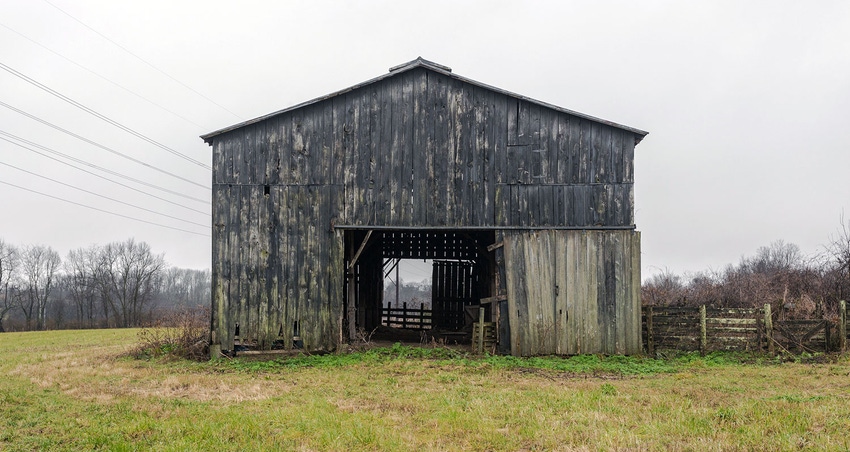
I spend a lot of time on the road, hurrying to meet county agents and consultants. Driving to visit growers in their fields across, and occasionally beyond Georgia. My travels take me down dirt roads and up Interstates; along Atlanta’s frenetic highways and beside quiet lanes in places like Damascus, Riddleville, and K’ville.
I often observe what once was, but which is quickly becoming no more. The landscape is dotted with empty grain silos, teetering tenant houses and orphaned chimneys. Faded signs saying “Services on 2nd and 4th Sundays” mark lonely country churches where graveyards lie hidden in the weeds. But what catches my eye more than anything is the contrast between once abundant tobacco barns and shiny new Dollar General stores, a contrast of where we were and where we are.
If asked for one piece of advice I would share with growers as we near the end of this cropping season and begin planning for the next, I would answer, “anticipate change." Change, often rapid and beyond our control, affects the way farmers produce crops in many ways. In the arena of disease and nematode management, change affects both the spectrum of pathogens that attack our crops and the tools available to fight them.
Restrictions
For example, because of restrictions from the European Union, most peanut growers in the Southeast don’t use propiconazole (Tilt) anymore and there is continued talk that use of chlorothalonil may be threatened. Though we haven’t planted DP 555 BG/RR for a while, there is speculation that rapid shift from this variety to other susceptible varieties played a major role in outbreaks of bacterial blight.
Vitavax PC was replaced quickly by Dynasty PD for treating peanuts seeds; Dynasty PD was replaced even more quickly by Rancona. Not too many years ago, few farmers treated their corn with a foliar fungicide and none treated a cotton crop. This is not true today.
Change and our use of fungicides go hand-in-hand. We hope that change brings effective fungicides with new modes of actions, but this doesn’t happen very often. We do have “new” fungicides that are increasingly effective, but they are all variations on an older, established mode of action.
Changes that are more likely to occur in your fields in the upcoming seasons are 1) new application timings for the products we have now, and 2) increased attention to protecting the fungicides we already use from resistance problems.
Changes for the future will include increased versatility from in-furrow applications for management of a wide range of pathogens include seedling and soilborne diseases, nematodes and early-season management of leaf spot in the peanut crop. Deploying tactics to reduce risk to fungicide resistance will be of the utmost importance, given the increased reliance on a very few modes of action and increased use of fungicides across all crops.
New Diseases
New and emerging diseases could affect how we protect our crops, or at least the importance given to fungicides and resistant varieties. Since 2017, areolate/Ramularia mildew on cotton has become of increasing importance to cotton growers in the Southeast. Where I often had to convince growers of the benefit to fight target spot with a fungicide, growers need little urging to protect their cotton from areolate mildew.
Corn growers know the threat from southern rust and are generally aggressive in use of fungicides. In 2021, tar spot was found on corn for the first time in Georgia and in other southern states. The threat from this disease could impact what we spray and when we spray it in the future.
Cotton leafroll dwarf virus has caused only minimal damage over the past several years, but there have been fields where yield losses have been severe. Protecting against this disease, possibly through the use of resistant varieties, will continue to be a consideration.
In “Time Marches On,” Tracey Lawrence sings, “The only thing that stays the same is that everything changes." So it goes with farming, especially when managing diseases and nematodes. Best protection of your crop next season and beyond may be different than it has been. Programs may use different fungicides at different timings, and you may plant different, improved varieties to battle nematodes and diseases.
Most tobacco barns in Georgia have cured their last tobacco crop, but Dollar General stores continue to spread along the highways and byways of the state. That really isn’t all that bad. As my buddy and retired UGA Extension agent Ronnie Barrentine reminds me, “My new bride was from the thriving metropolis of Hawkinsville, moving to little Pinehurst wasn’t easy for her. Then one day the Dollar General came to town and she said, ‘Ronnie, I believe I am going to be OK after all.’”
Time marches on …
Read more about:
NematodesAbout the Author(s)
You May Also Like






